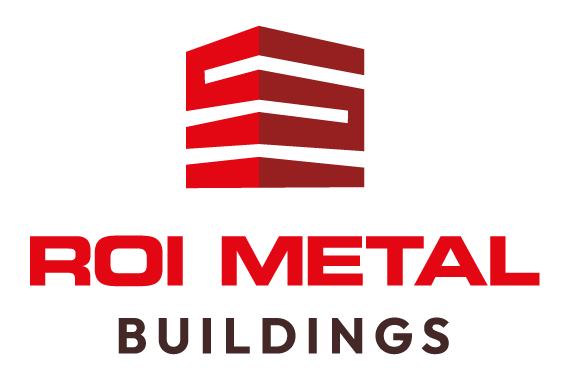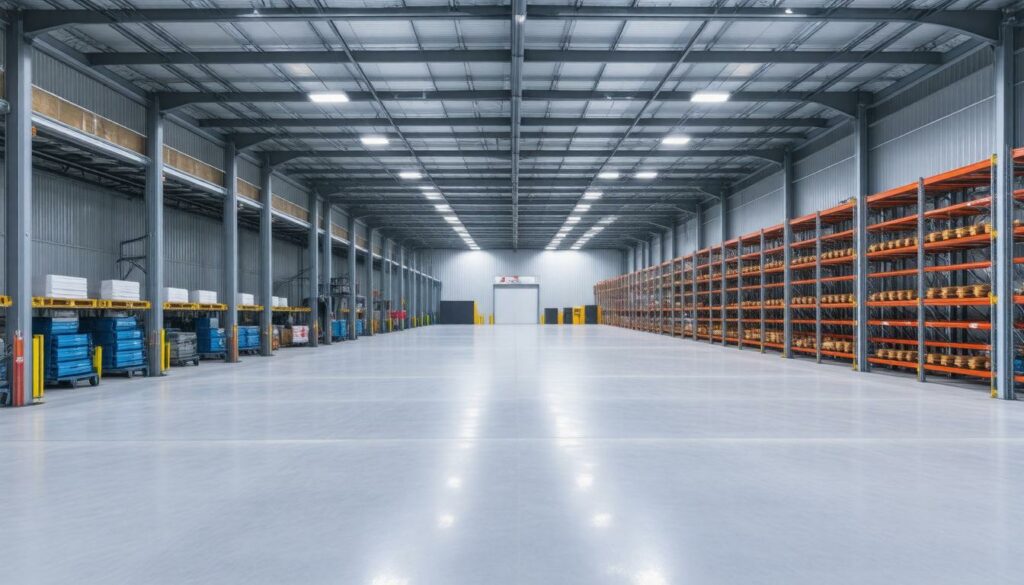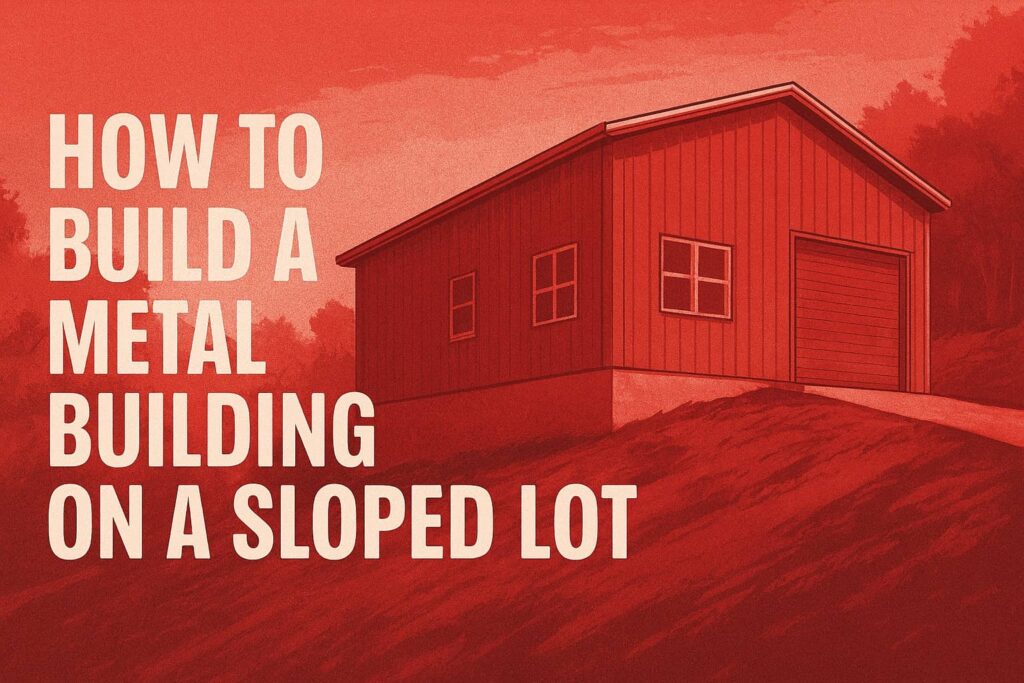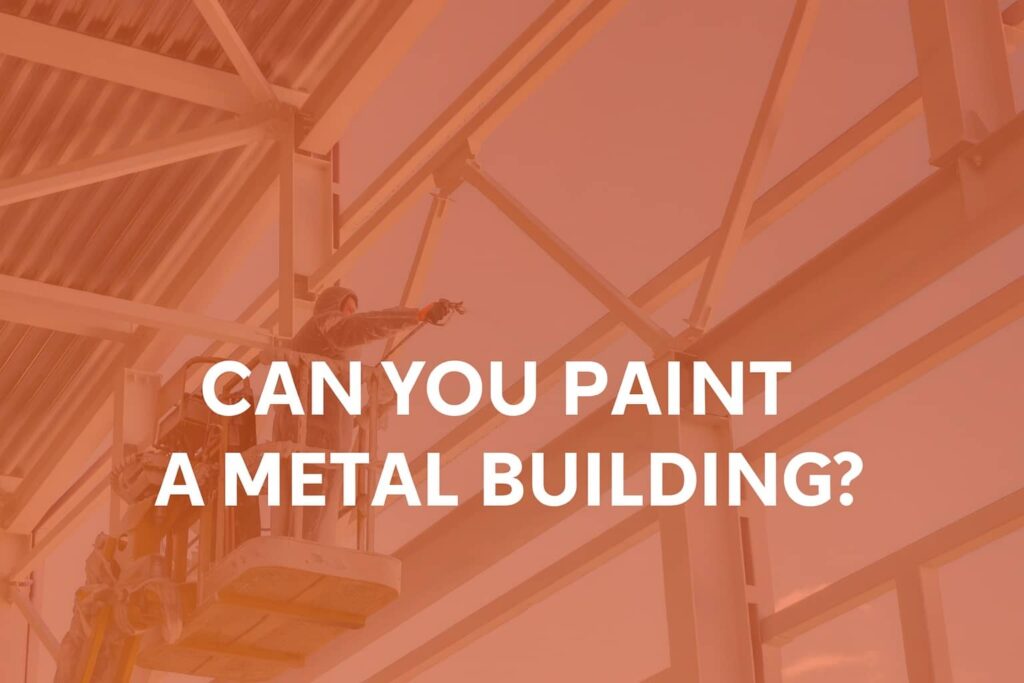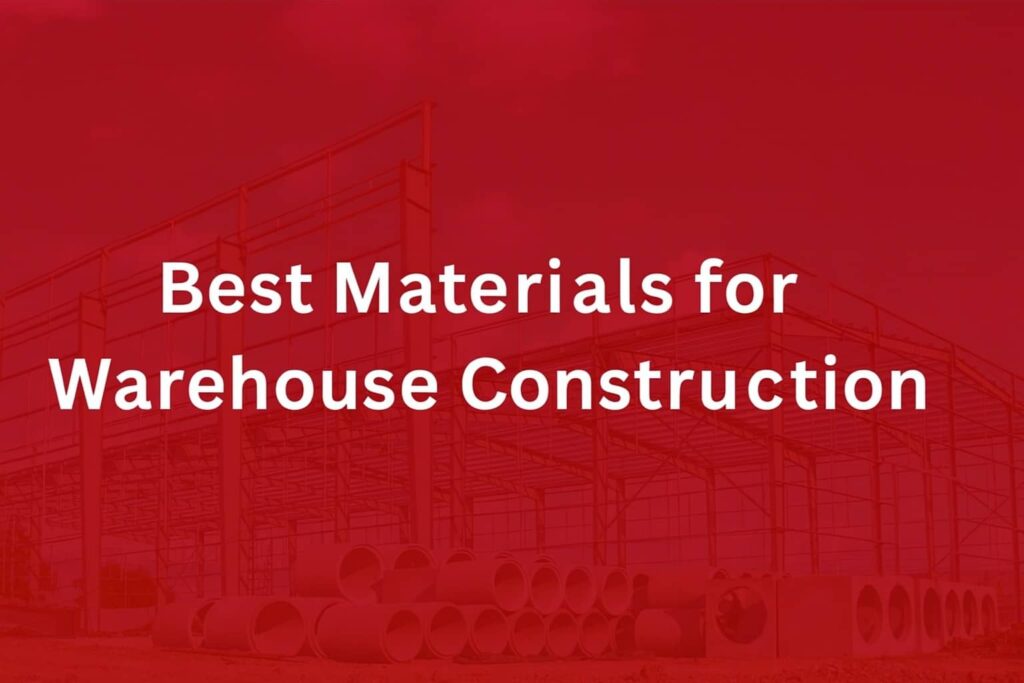When you’re looking to build a commercial space, the choice of material can significantly impact your bottom line. Have you ever considered using metal? It’s not just about aesthetics; metal buildings are gaining popularity for their impressive benefits that go beyond just looks. They promise to save you time and money while offering incredible durability. Plus, they’re customizable to fit any business need! In this article, we’ll dive into the benefits of metal buildings for commercial use, showcasing why they may well be the best investment for your growing business. Let’s explore how going metal might just be the smartest decision you make this year!
Recently, we published a series of articles about metal building shops and a single article about the benefits of metal building shops across the country. This was part of a dedicated mini-series diving into metal building shops, and it got a lot of attention from people across the United States who were looking to purchase a metal shop building. We also got a lot of attention from others asking questions about other types of commercial metal building applications.
Because of this interest, we decided to make our next article series all about these commercial metal buildings and their different types, uses, and benefits. Keep reading to learn more about the ins and outs of the benefits of metal buildings for commercial use. If you’ve followed our articles in the past, you’ll remember that we go into a lot of detail and aim to provide more value than anyone else in the industry. Stay tuned for this mini-series, and please don’t hesitate to join the conversation and share your thoughts with our team!
Metal buildings offer several key benefits for commercial use, including cost-effectiveness, durability, and low maintenance. They provide significant energy savings through insulation and materials that resist weather damage, while their customizable designs allow for flexible layouts tailored to specific business needs, making them a smart choice for various industries.
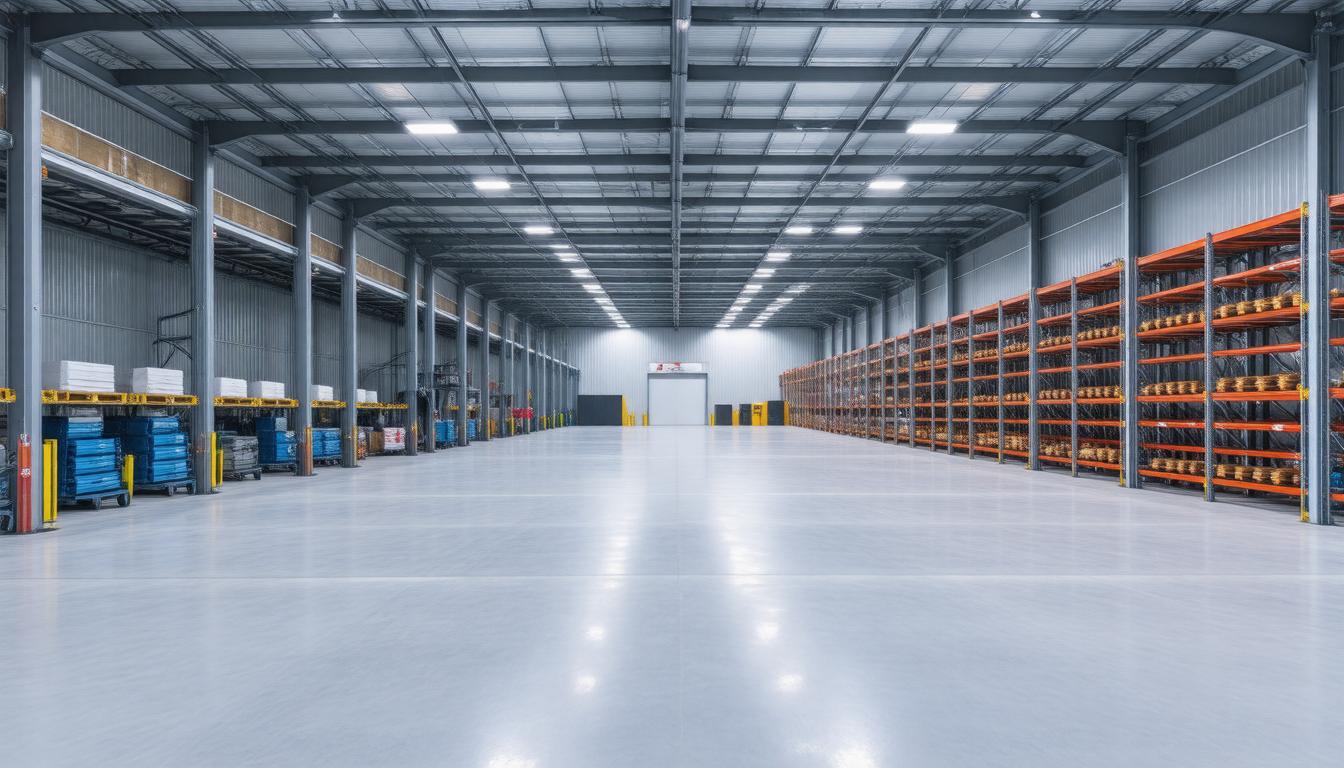
Why Choose Metal Buildings for Your Business?
Metal buildings have gained significant traction in the commercial realm for a multitude of compelling reasons. First and foremost, their cost-effectiveness stands out. When you think about expenses, consider not just the initial investment but also long-term savings. Metal structures can save businesses up to 30% in construction costs compared to traditional materials like wood or concrete. Plus, they require 50% less maintenance over their lifetime. Imagine having more capital available for other investments simply by choosing the right building materials.
Additionally, the lifespan of metal buildings typically exceeds 50 years—much longer than wood structures, which average around 30 years. This longevity translates to fewer replacement costs and a sustainable solution that keeps your budget intact over time.
Now, let’s explore one of the key aspects: energy efficiency. Metal roofs and appropriate insulation practices can reduce energy costs by as much as 20-30%. During sweltering summers or frigid winters, these savings can make a noticeable impact. You not only save money, but you also contribute to a greener planet with reduced energy consumption.
Yet, there’s more—metal buildings do not succumb to common issues like mold or pest damage, which plague wooden structures. Think about it: no need for costly pest control measures or treatments for mildew! This inherent durability allows businesses to focus on their operations rather than worrying about their infrastructure.
In addition to these benefits:
- Quick Construction: Prefabricated steel buildings can be erected rapidly, allowing businesses to start operations sooner.
- Resale Value: Metal structures retain their value well, making them appealing to potential buyers if you ever choose to sell down the line.
As we explore the flexibility aspect of metal structures, it’s essential to recognize that customization plays a significant role in appealing to various business needs.
Modern metal construction empowers businesses with extensive design options. Whether you operate a manufacturing plant or an agricultural facility, you can tailor your space effectively while maintaining your brand identity. Because metal buildings utilize a frame structure rather than traditional load-bearing walls, designers enjoy far greater freedom when conceiving the interior layout—a real benefit whether you’re maximizing storage or creating an inviting retail space.
With these advantages in mind, understanding how such structures withstand various conditions further highlights their value for any growing enterprise.
Durability and Long-Lasting Properties
One of the top reasons businesses opt for metal buildings is their exceptional durability. Metal structures are engineered to endure, often outliving buildings made from traditional materials by decades. With their strong framework, commercial steel buildings can withstand harsh weather conditions that might devastate other types of construction.
Imagine a snowstorm or high winds battering a neighborhood; while wood structures may show signs of damage, a well-built metal building remains standing strong.
To put things in perspective, think about the integrity of the materials used. Unlike wood, which is vulnerable to rot, warping, and even pest infestations from termites, metal stands resilient. This resilience means that structural integrity remains uncompromised over time, ensuring that businesses can continue to thrive without the disruptions that come from significant repairs or replacements.
Industry Testimonials
“We’ve had our metal warehouse for over 25 years, and it has held up against all kinds of wear and tear,” says Jane Doe, CEO of ABC Industries. Her experience underscores how metal buildings not only promise longevity but deliver on it, providing reliable spaces with minimal upkeep needs.
This longevity translates into fewer repairs and replacements, making metal buildings a more economical long-term investment. For example, let’s take a closer look at the lifespan of different building materials:
| Material | Average Lifespan |
|---|---|
| Wood | 20-30 years |
| Concrete | 50-60 years |
| Metal | 75-100 years |
You can see here that the average lifespan of steel structures significantly surpasses that of wooden constructions, reassuring business owners that their investment will stand the test of time.
In addition to material decay concerns, consider fire safety. Fire ratings for steel structures typically extend to one to two hours before structural elements are compromised. In contrast, wood offers only about 15 to 30 minutes before it becomes a liability—an important distinction for any business owner prioritizing safety and insurance considerations.
By opting for a durable structure like metal, businesses also enjoy low maintenance costs—estimated to be around 30% lower when weighed against traditional options over their respective lifespans. Not only does this reduce annual expenditures, but it leaves more resources available for operational growth and innovation—essentially allowing capital that would have gone toward upkeep to be reinvested elsewhere.
As we transition into understanding further attributes, exploring how these structures fare against severe weather conditions will reveal additional advantages that set them apart in commercial applications.
Resistance to Extreme Weather and Fire
When you think about durability, the first thing that comes to mind might be strength. Metal buildings take this concept further, particularly when it comes to resisting extreme weather events. These structures are built with materials designed to withstand hurricane-force winds, heavy snowfall, and even seismic activity. What sets them apart is not just their construction but their overall resilience; studies have shown that metal buildings can endure winds of up to an astonishing 170 mph. This makes them a favored choice for business owners in areas frequently battered by harsh storms.
But it’s not just high winds that metal buildings combat effectively. Their fire resistance plays a crucial role in safety and liability mitigation. Unlike wooden structures, which can ignite easily from embers or radiant heat, metal remains non-combustible. The critical protection provided by metal roofs against wildfires highlights this advantage significantly. They won’t catch fire or warp like other materials—providing peace of mind when wildfire conditions escalate.
In regions historically threatened by both hurricanes and fires, choosing metal buildings means investing in solutions that stand the test of time while minimizing risk.
Take Florida as an example: communities there have reported drastically fewer damages during hurricane seasons thanks to the resilience of metal structures. Not only do businesses benefit from reduced damage, but they also enjoy lower insurance premiums, making it a financially savvy decision. In a recent survey conducted among commercial buildings located in tornado-prone states, data illustrated that metal structures experienced nearly half the damage rates compared to their wooden counterparts. These statistics tell a compelling story about the protective qualities of metal buildings.
Furthermore, you don’t just need to consider the initial building costs; it’s also essential to think long-term. Metal buildings generally require less maintenance than traditional constructions. Their resistance to elements also translates into savings over time because you will spend less on repairs and upkeep. For anyone looking at value not just today but for years down the road, this is an essential consideration.
As we continue exploring the financial advantages tied to these resilient choices, consider how their efficiency translates into tangible savings on upkeep and materials.
Savings on Maintenance and Materials
Keeping a commercial building in good shape often turns into a constant juggling act, especially when rising repair costs enter the equation. Fortunately, there’s a way to lessen this load: metal buildings. Their design and material composition bring long-term savings that can feel remarkably liberating for businesses trying to navigate tight budgets.
One key reason for these reduced expenses is that metal buildings are resistant to common issues plaguing traditional structures. Unlike wood, which can easily succumb to mold, mildew, pests, or rot, metal stands firm against these threats. This means fewer repairs and replacements, allowing business owners to focus resources where they matter most—growing their operations rather than fixing damages caused by critters or decay.
Key areas where metal buildings cut maintenance costs include the following:
- Resistant to Termites and Pests: Unlike wooden structures, metal doesn’t attract termites or other damaging pests. This creates peace of mind as you won’t have to worry about infestations.
- Rust and Corrosion Protection: Many modern metal buildings come equipped with rust and corrosion-resistant coatings that significantly prolong the life of the building and eliminate the need for frequent maintenance.
- Minimal Exterior Maintenance: Metal roofs stand out for their durability, requiring less upkeep compared to traditional shingle or tile roofs. While asphalt shingles may need replacement every 15-20 years, metal roofs can last upwards of 40 years or more with minimal attention.
Coupled with their energy efficiency features—which also help in cutting utility costs—it becomes clear why metal buildings present a financially wise investment for businesses looking for durability without hefty upkeep bills. This leads us to explore how these structures offer remarkable adaptability in design, enhancing both functionality and aesthetic appeal.
Versatility and Flexibility in Design
Metal buildings offer a wealth of customization options that cater to the ever-changing needs of businesses across various industries. Unlike traditional brick-and-mortar structures, metal buildings can be engineered to meet specific requirements, providing an adaptable solution that saves both time and resources. This flexibility extends beyond mere aesthetics; it encompasses functionality as well. Businesses can create vast open spaces that allow for seamless modifications and tailor their spaces according to their operational demands.
Customization Options
Think about it: when you choose a metal structure, you’re not tied down by rigid design specifications. Instead, you can select unique roof styles, door configurations, and color schemes that resonate with your brand identity. For instance, a manufacturer might opt for an industrial-style roof to enhance productivity within a spacious manufacturing plant.
Additionally, metal buildings can incorporate various insulation types to help maintain optimal temperatures year-round—a crucial factor in energy efficiency.
What sets these buildings apart further is their potential for future growth.
The open floor plans commonly found in metal structures allow businesses the freedom to adapt their layouts as needed. Imagine a growing retail store that started with modest space and quickly expanded its operations. With a steel building, the owners can easily rearrange or add internal walls without significant limitations, preserving the aesthetic quality while enhancing functionality.
Among other benefits of metal buildings for commercial use are popular features like expansive windows, which can be added or modified to let in natural light, improving the working environment and reducing utility costs.
As you explore our site and commercial metal building offerings, consider the importance of future-proofing your investment through adaptable design choices.
The ability to expand or reconfigure locations with minimal disruption makes metal buildings particularly appealing in today’s fast-paced commercial landscape. The ease of making adjustments contributes significantly to an organization’s agility; whether it’s accommodating new equipment at a manufacturing site or transforming a space for community use at an educational institution or church, metal structures stand ready for change.
In today’s dynamic business environment, maintaining versatility is essential. Exploring how certain building materials contribute to sustainability will reveal additional benefits that enhance long-term value and operational efficiency.
Eco-Friendly Benefits

In a world increasingly attentive to sustainability, eco-friendly steel buildings unfold a multitude of benefits that position them as a responsible choice for commercial use.
Firstly, metal buildings boast an impressive inherent characteristic: they are highly recyclable. This means that a structure’s end of life can be the beginning of a new one, as old metal can find new purpose without tapping into the earth’s resources. It is estimated that steel has a recycling rate of over 80%, according to the Steel Recycling Institute. This exceptional figure underlines just how prevalent recycling has become in the steel industry, addressing the demand for fresh materials while simultaneously conserving energy and reducing waste.
To put things in perspective, consider that around 70 million tons of steel are recycled every year in the United States alone. When you think about it, every steel building represents an opportunity not just to utilize existing materials but also to reduce our collective carbon footprint substantially.
An essential consideration for businesses today is not merely about the immediate financial return on investment but rather the broader impact they have on future generations.
Environmental Impact
While critics occasionally point to the initial energy costs associated with manufacturing steel, it’s vital to take a step back and rethink that statement. The high strength-to-weight ratio of steel enables more minimalist structural designs, meaning less material is required to achieve the same stability compared to traditional building materials. Additionally, metal buildings can endure much longer than their counterparts made from less resilient resources, which translates into fewer resources being consumed over time.
Moreover, let’s address the naysayers who highlight the environmental toll of production; we must consider the bigger picture. Yes, initial energy inputs may appear significant, but when examining life cycle impacts—the longevity and recyclability of metal clearly overshadow these initial investments. The truth here is not just in the numbers; it lies in recognizing that when those buildings are no longer needed, each part can be reused infinitely without loss of quality.
Furthermore, advancements in metal building technology allow for incorporation of energy-efficient insulation systems and reflective roofing materials that significantly lower heating and cooling expenses. Not only do these innovations advance your operational bottom line, but they also play a critical role in conserving energy long-term. By reducing reliance on fossil fuels and lowering emissions, eco-friendly metal structures become not just shelters but active participants in promoting sustainability.
These compelling benefits demonstrate why eco-friendly metal constructions are gaining traction among builders and organizations eager to make a positive impact on both their financial performance and environmental responsibility. Now, let’s explore how the installation process complements these advantages with remarkable efficiency.
Rapid Installation Process
One of the most attractive features of metal buildings is their swift installation process. Unlike traditional construction methods, metal buildings are frequently prefabricated. This means that components are manufactured beforehand and simply assembled on-site, allowing for a remarkably quick turnaround.
In fact, while a conventional warehouse might take upwards of six months to complete, a similarly sized metal structure could be finished in as little as three months. When every day counts, this rapid installation can translate into substantial cost savings and operational efficiency for businesses.
As John Smith from DEF Logistics once shared, “We were able to set up our new distribution center in half the time we anticipated, thanks to the easy assembly of our metal building from ROI Metal Buildings.” His words echo a common sentiment among business owners who switch to metal buildings: time saved can lead directly to money saved. But what does the installation process entail?
Step-by-Step Installation Process
Understanding the steps involved in erecting a metal building can provide insight into why these structures are so quickly constructed. Here’s a breakdown of the usual process:
- Foundation Preparation: A solid foundation must be laid first. Whether it’s a concrete slab or another suitable base, this step ensures stability and longevity for the building.
- Assembly of Frame: The assembly of the metal frame involves using bolted connections, where crews piece together rounded or angled steel sections that create the skeleton of your new building.
- Wall and Roof Installation: Once the frame is up, it’s time to attach the wall panels and roof materials with large metal sheets that fit snugly to cover the structure, providing weather resistance while maximizing energy efficiency.
- Interior Customization: Finally, once the exterior is secure, companies can customize the interior space according to their specific needs—be it for storage, manufacturing, or office use.
Each step is streamlined through effective planning and coordination, minimizing delays and disruptions often seen in traditional construction projects.
Additionally, due to design characteristics and modular components, metal buildings typically require fewer inspections and permits compared to standard structures. This aspect alone expedites the overall installation timeline by as much as 15%, further enhancing their appeal for businesses looking to minimize downtime.
Summary: The Benefits of Metal Buildings For Commercial Use
If you’re interested in harnessing all these benefits—from quick setup times to strong foundations—consider exploring our offerings by contacting ROI Metal Buildings today to get your new commercial metal building. If you’re considering a project involving metal self-storage buildings, we specialize in that as well—talk to us at ROI Metal Buildings or call us at 865-316-9009 today! Also, if you like our content and want to stay up to date, follow us on Facebook at https://www.facebook.com/roimetalbuildings!
